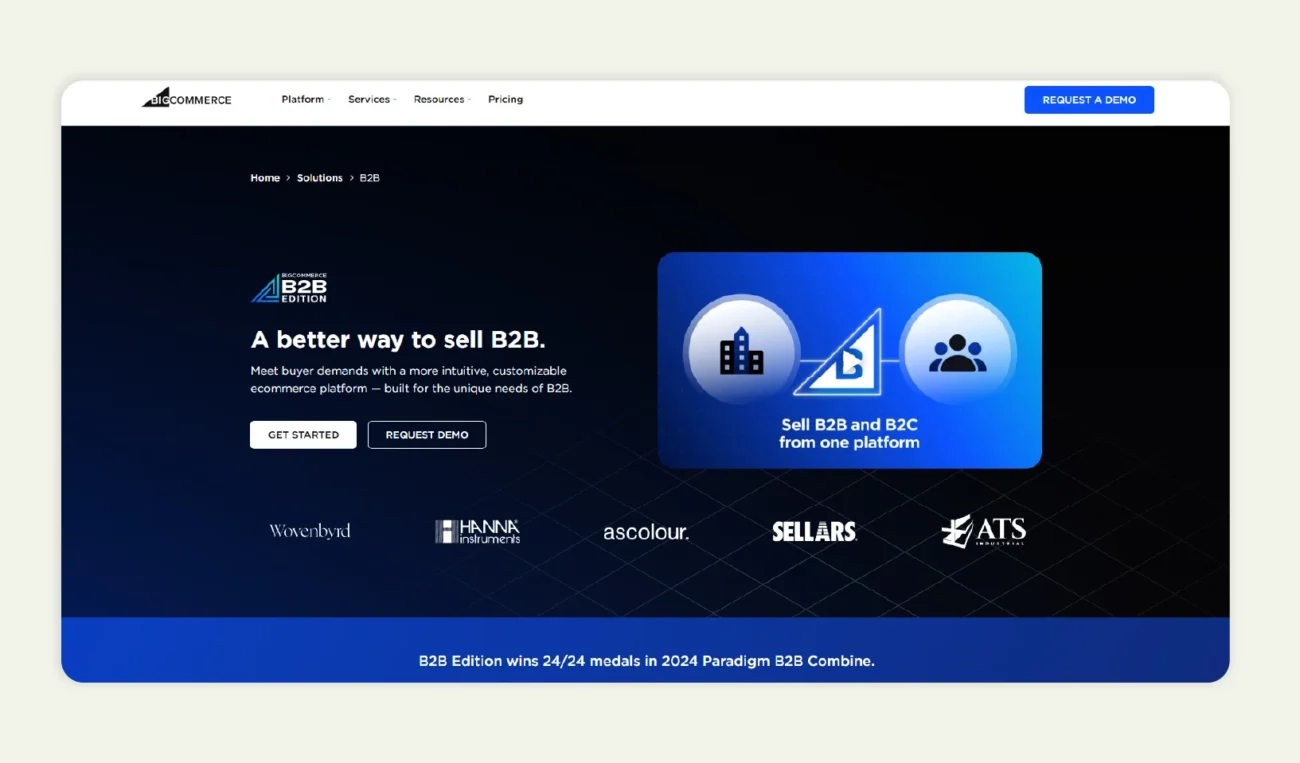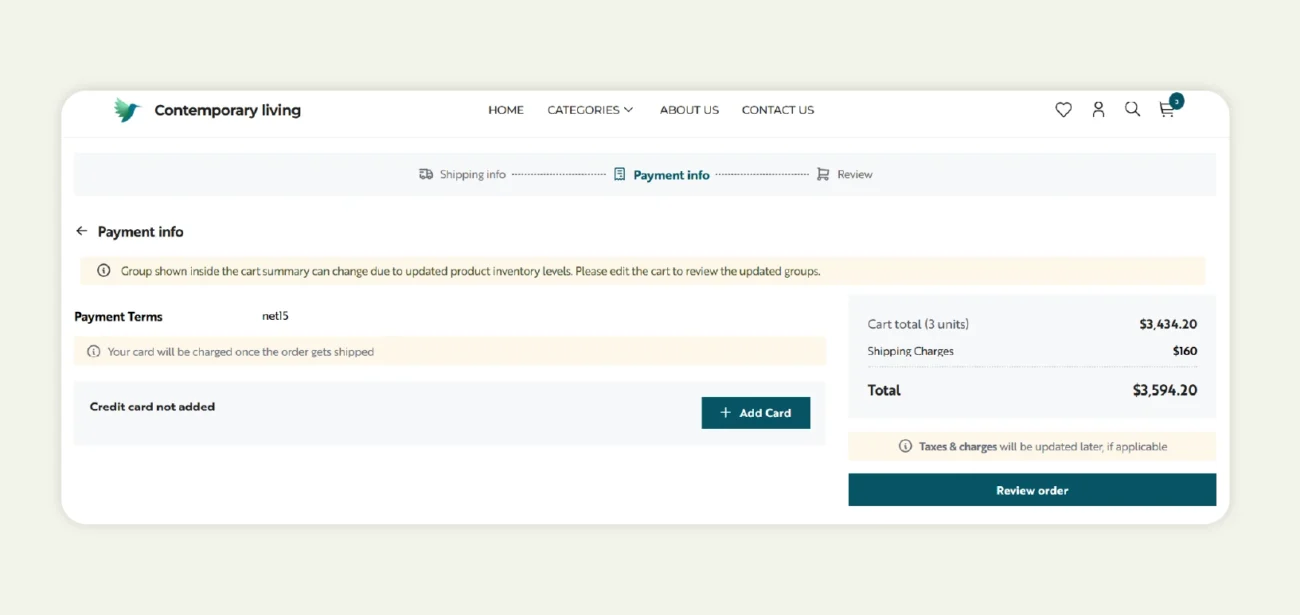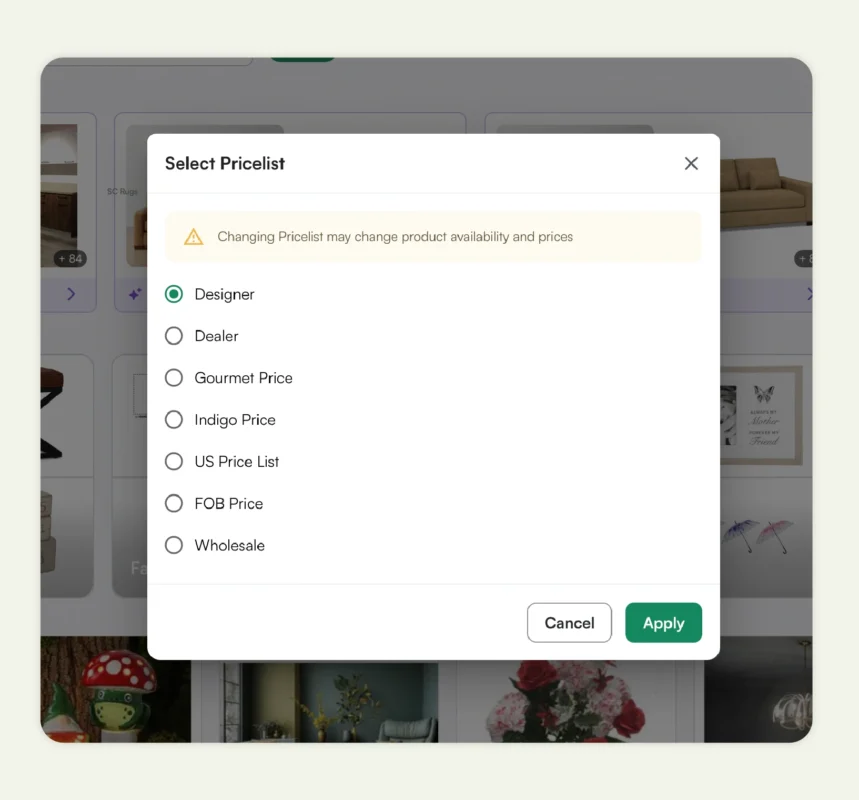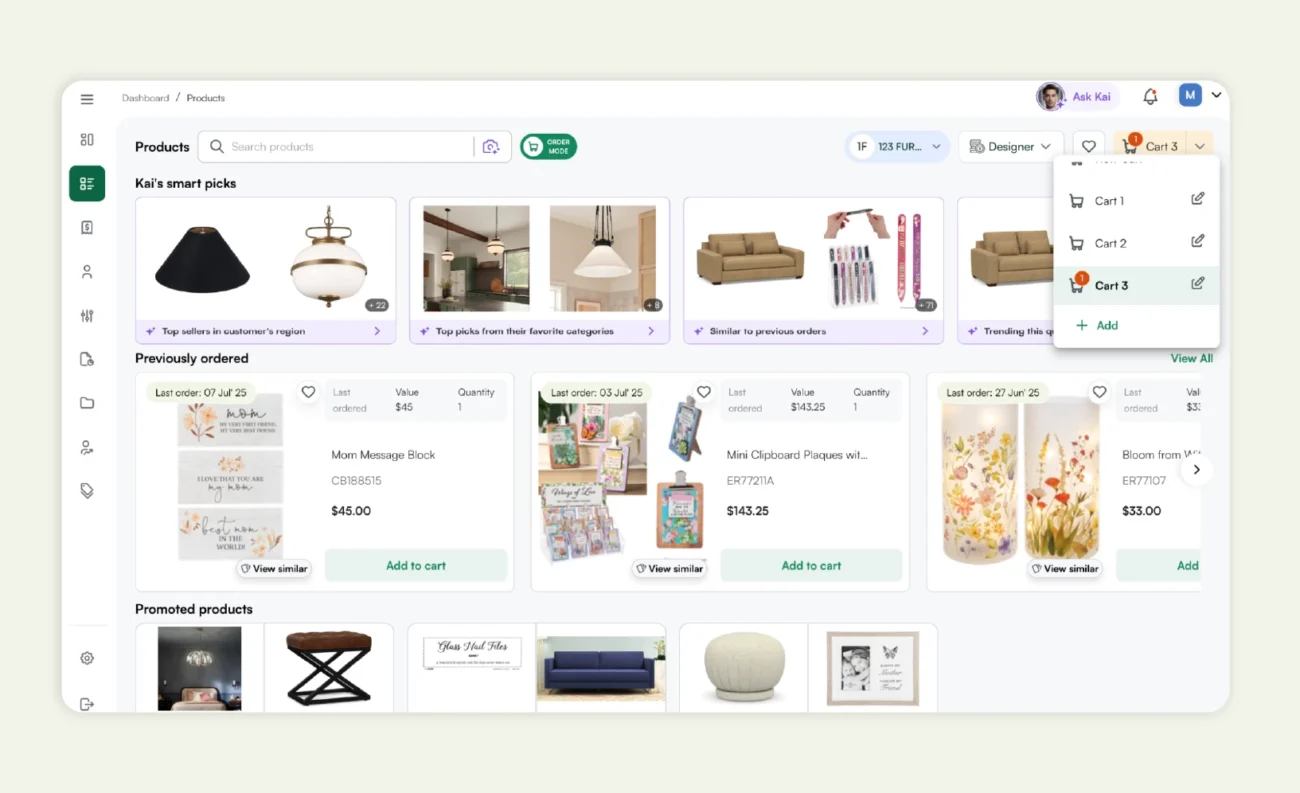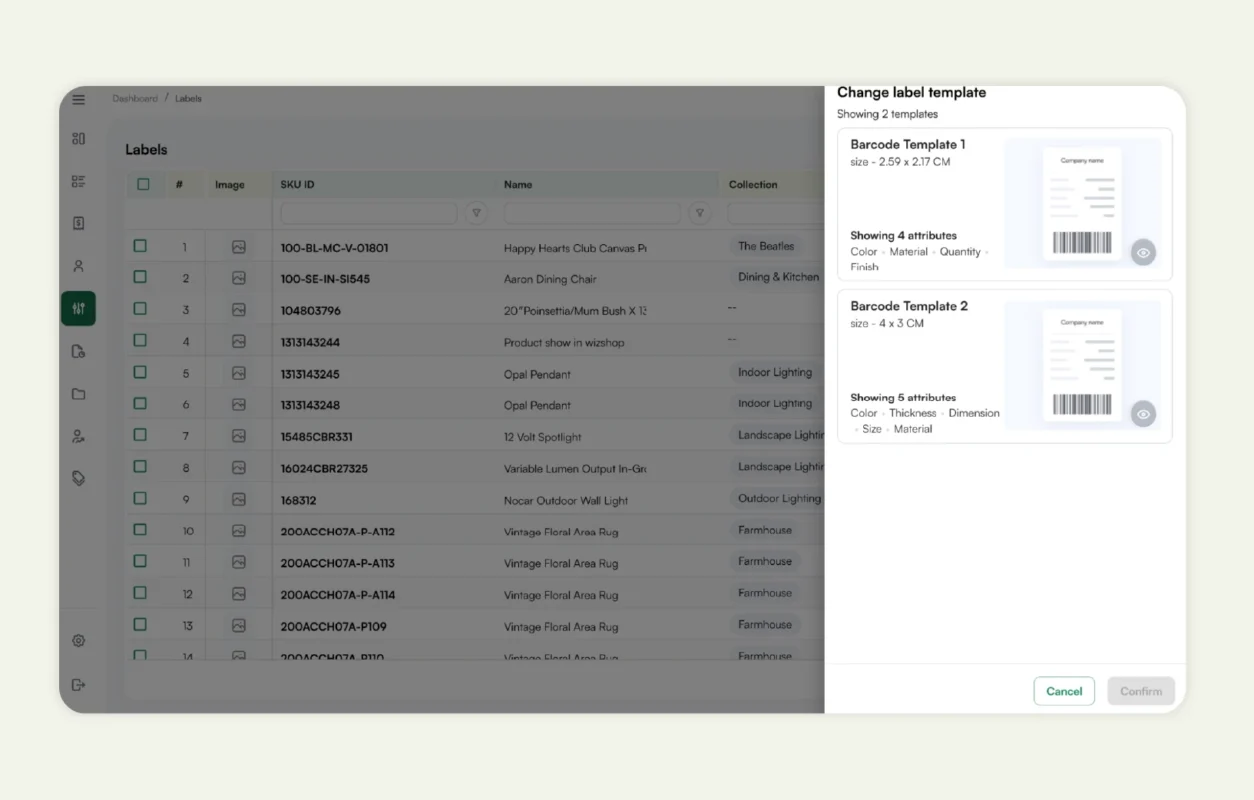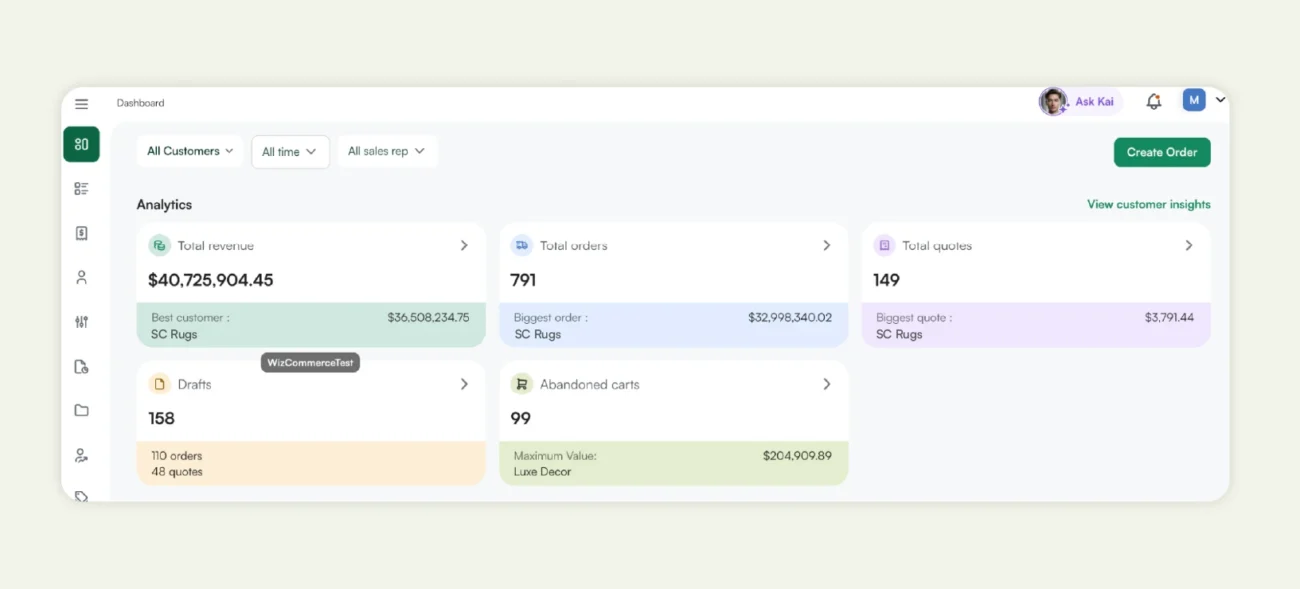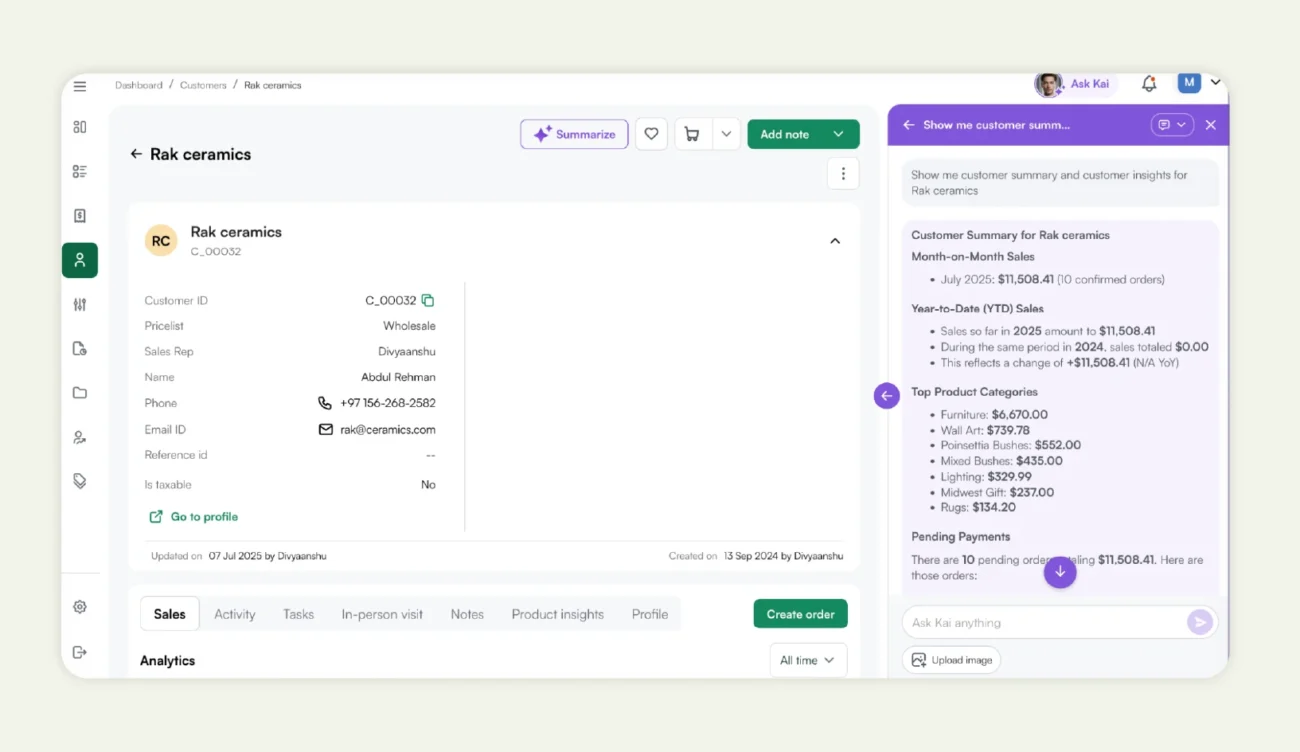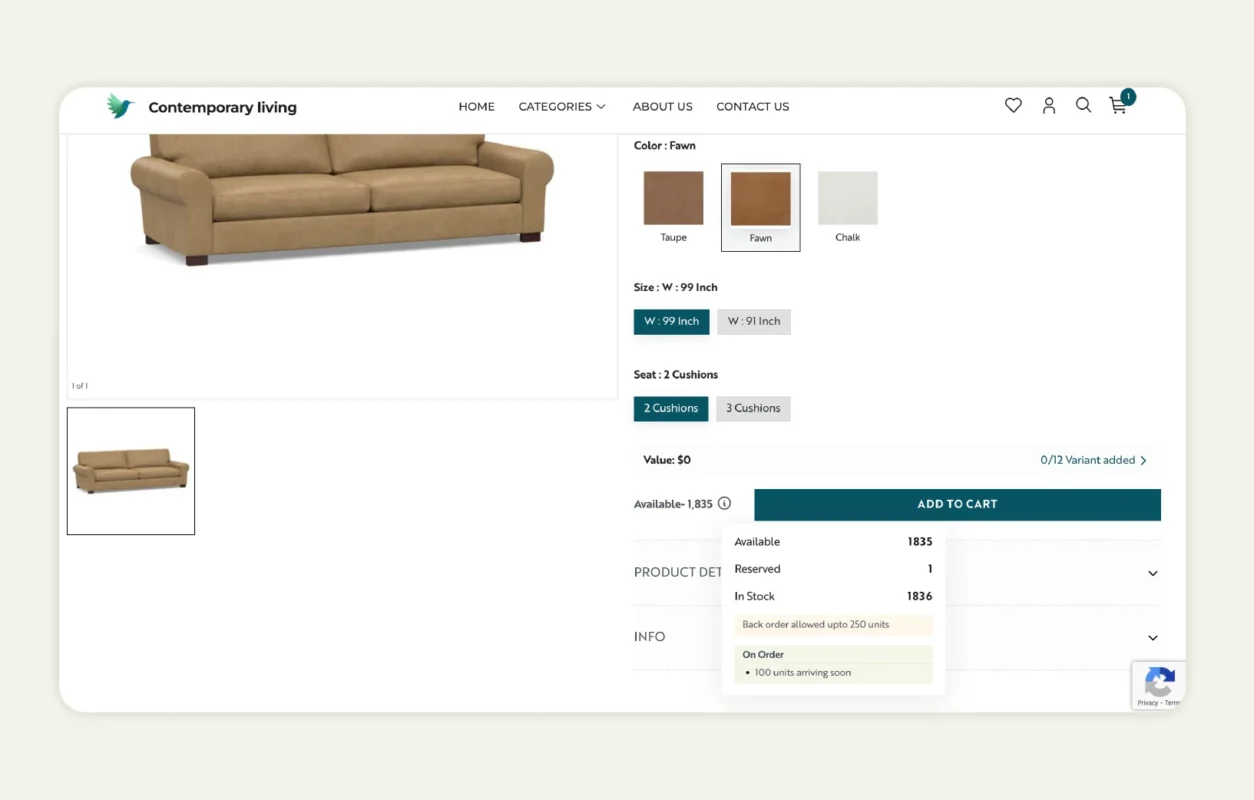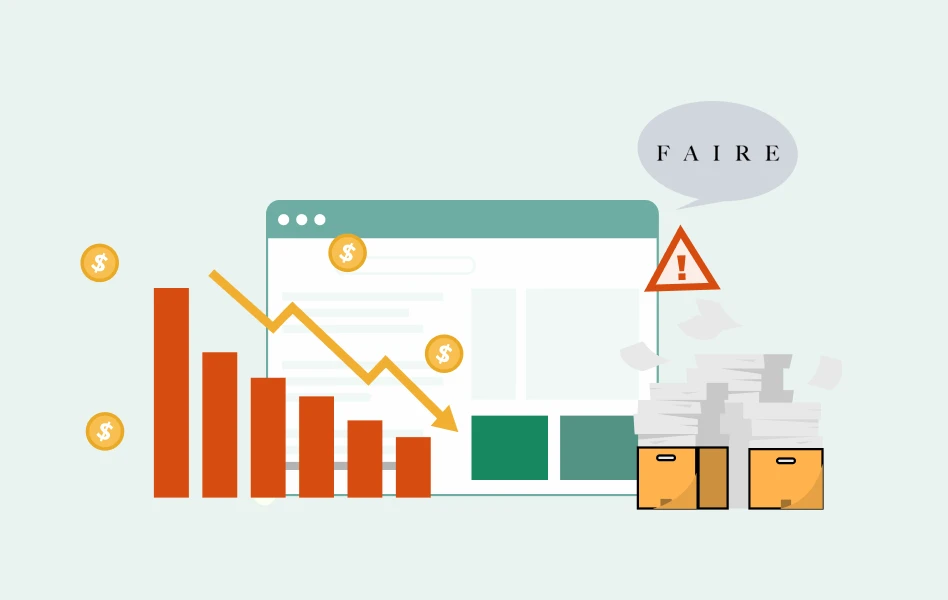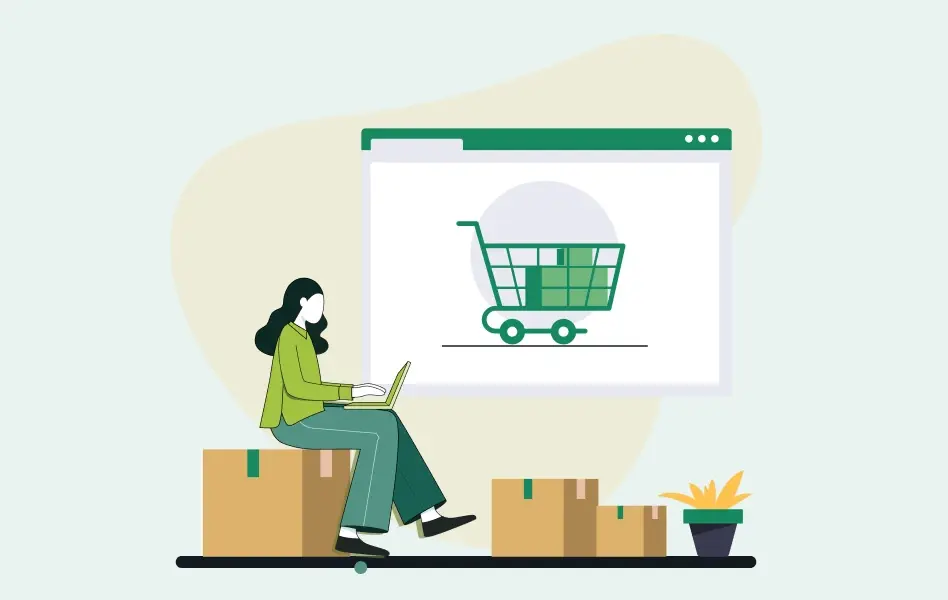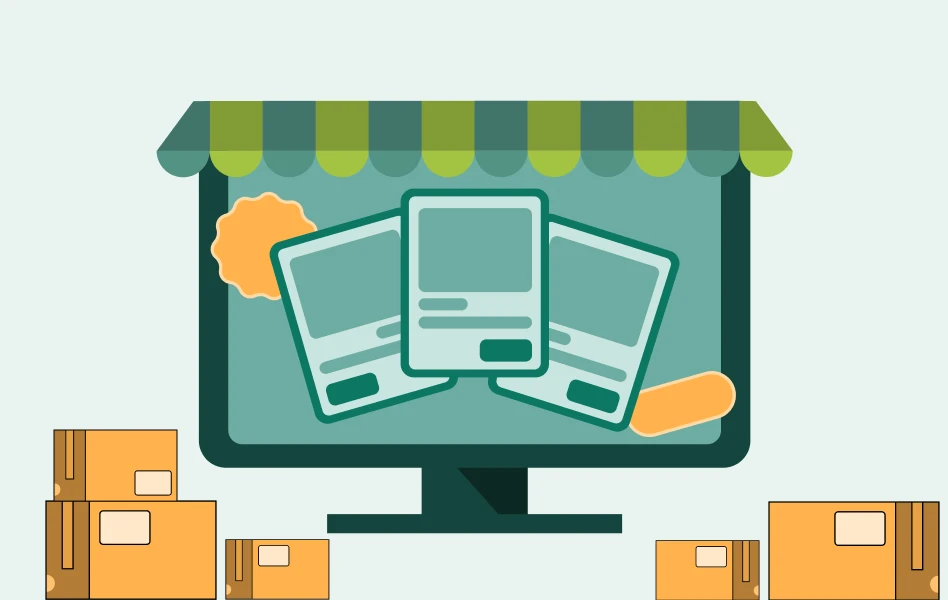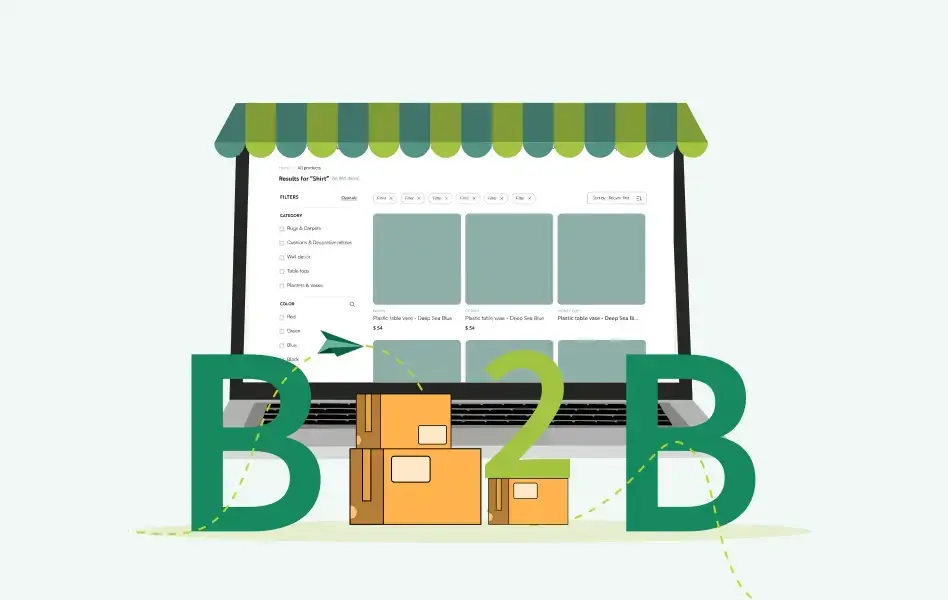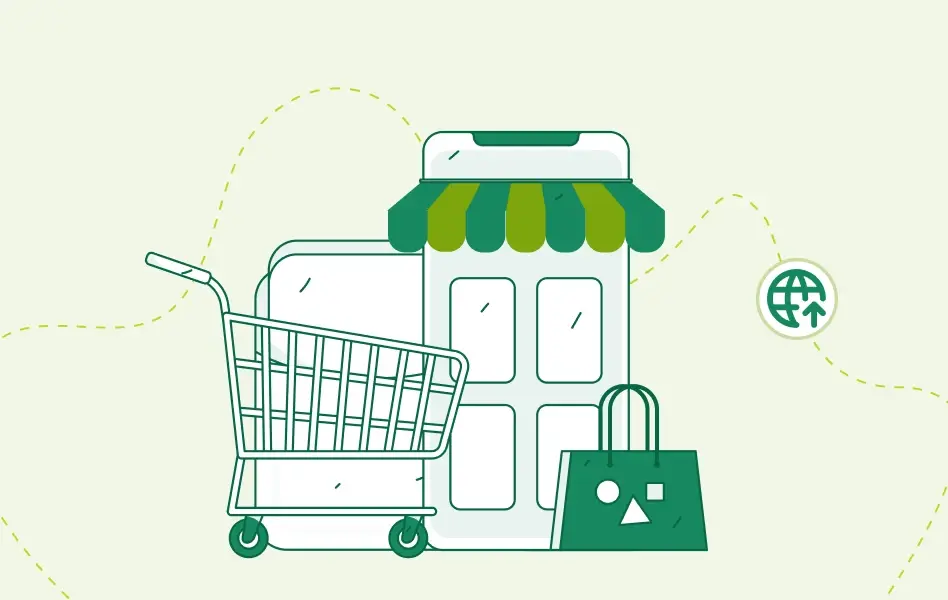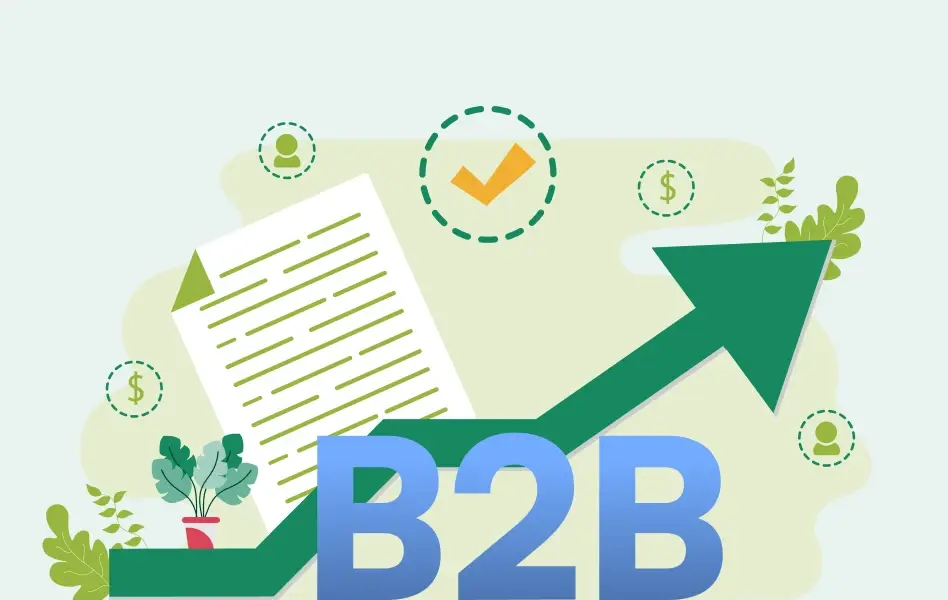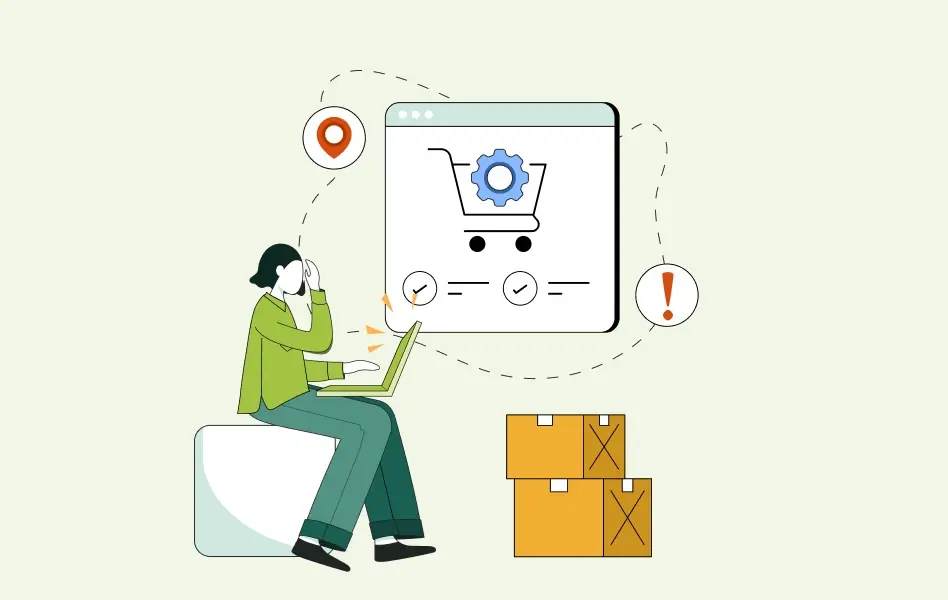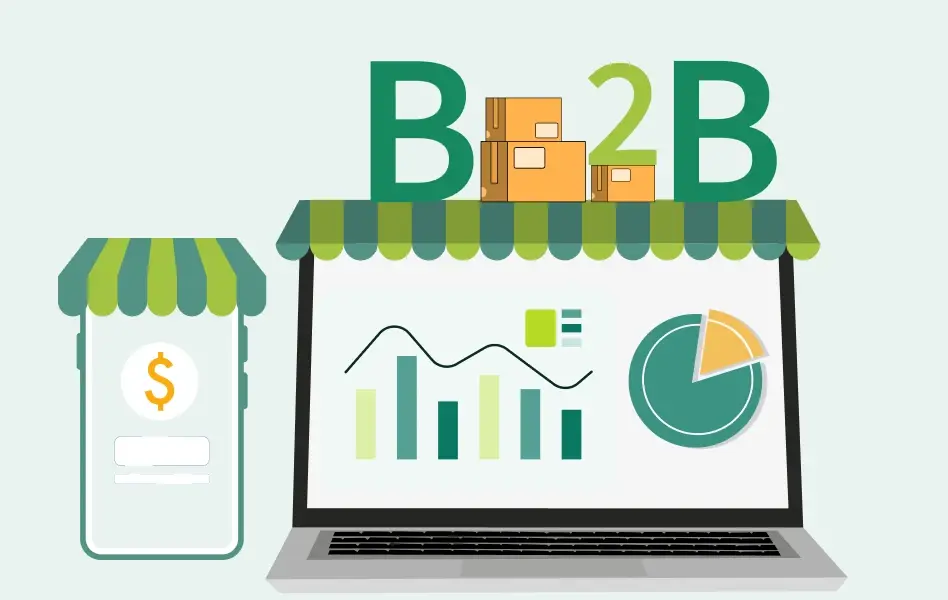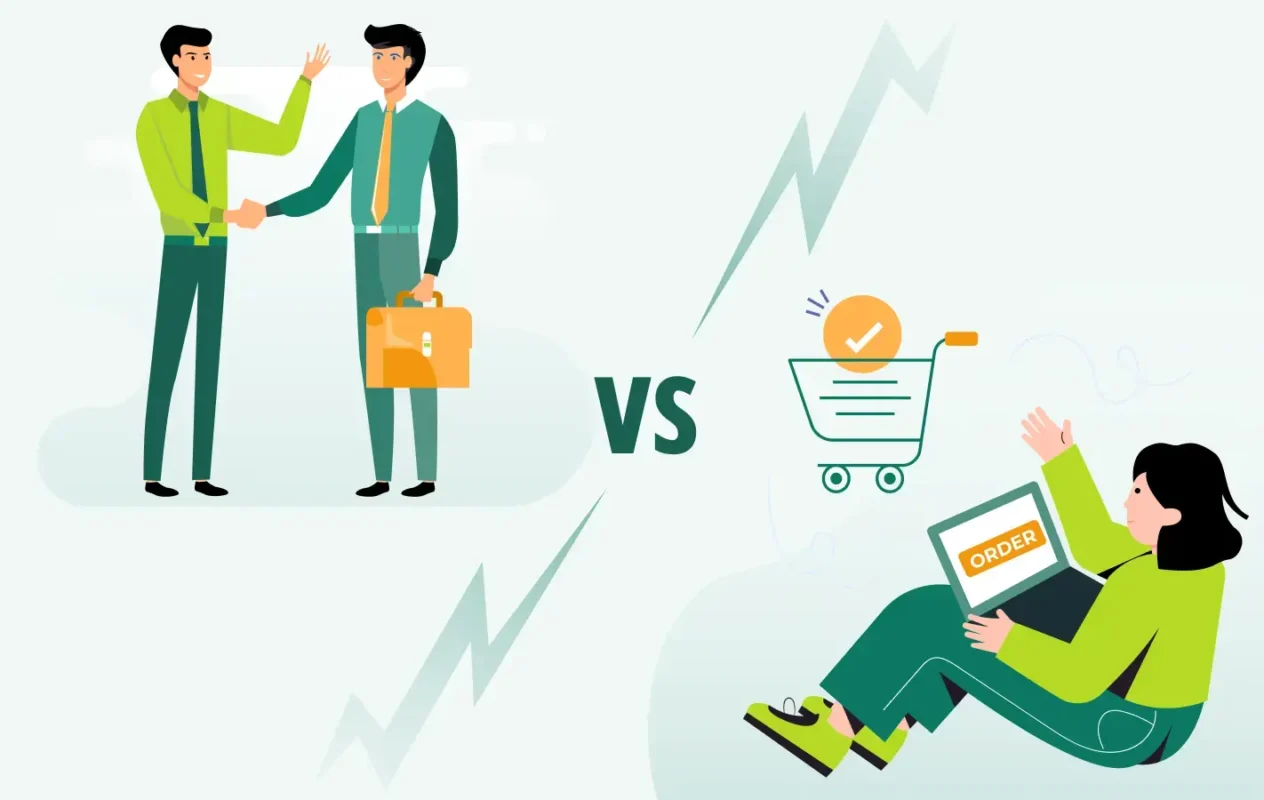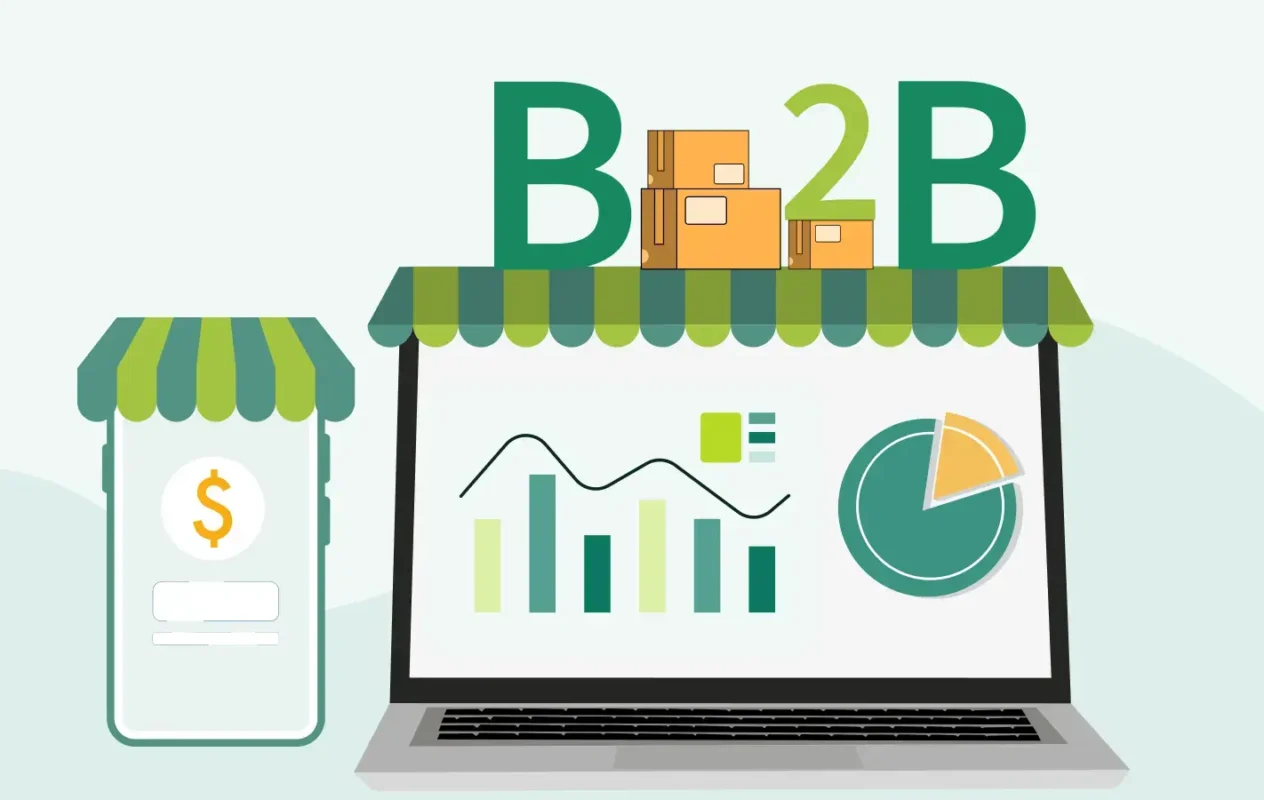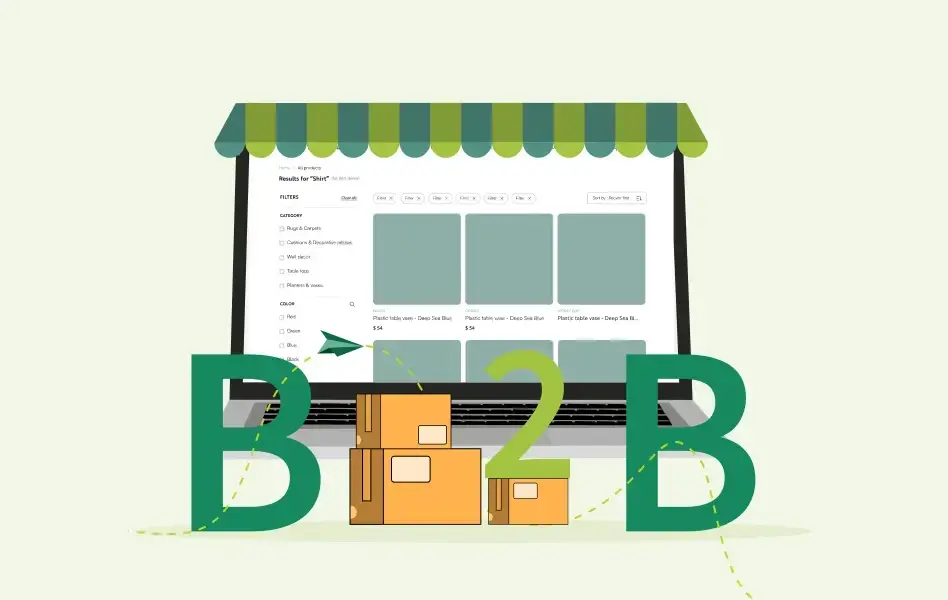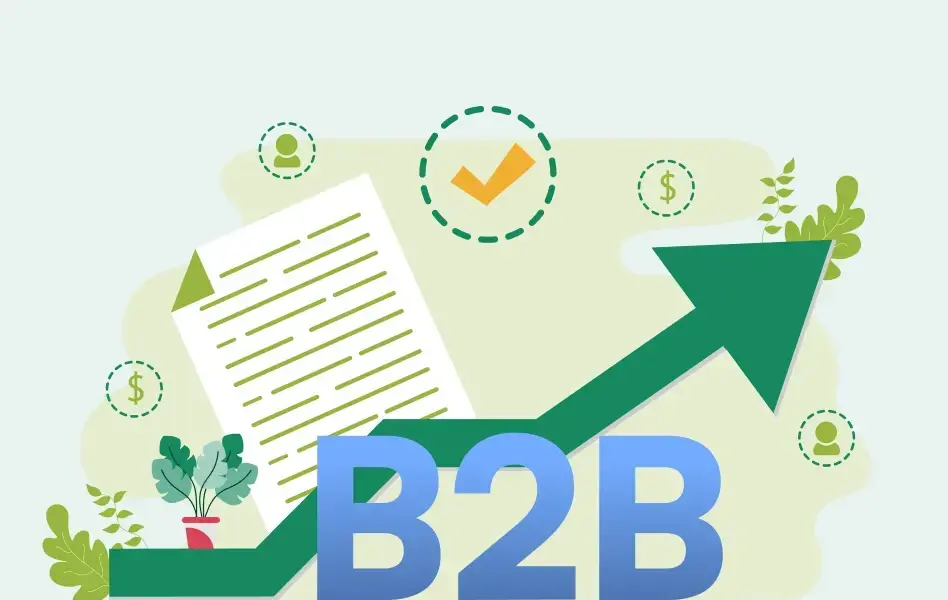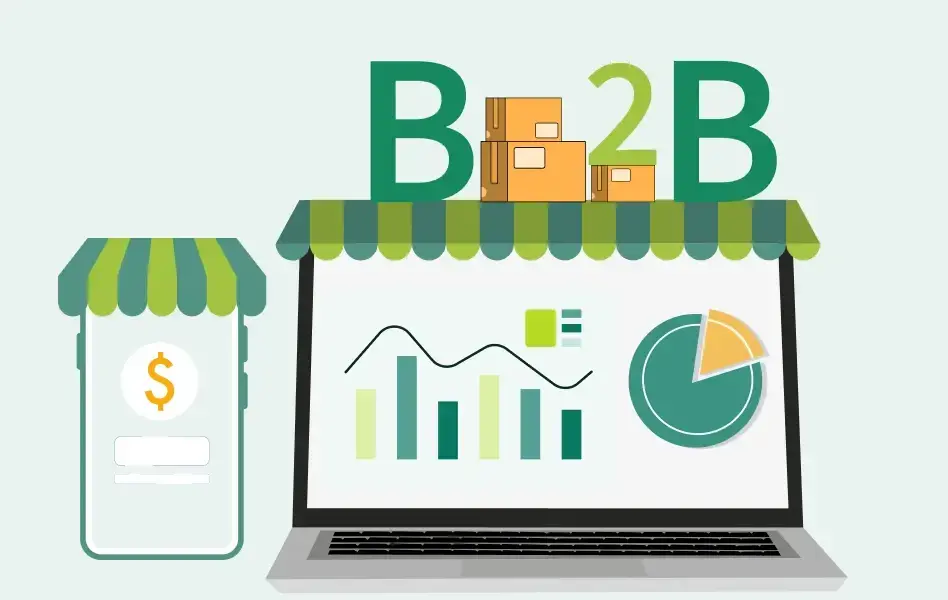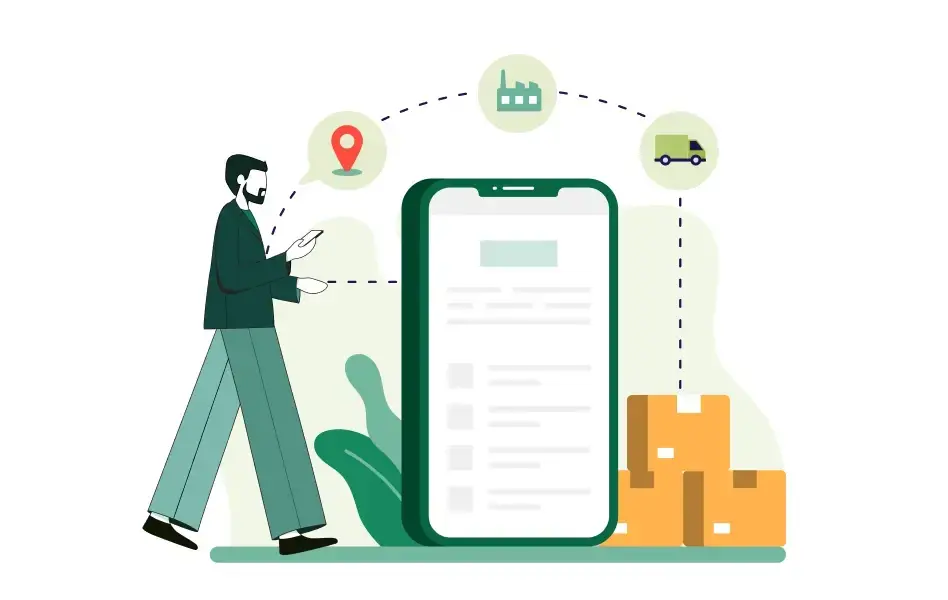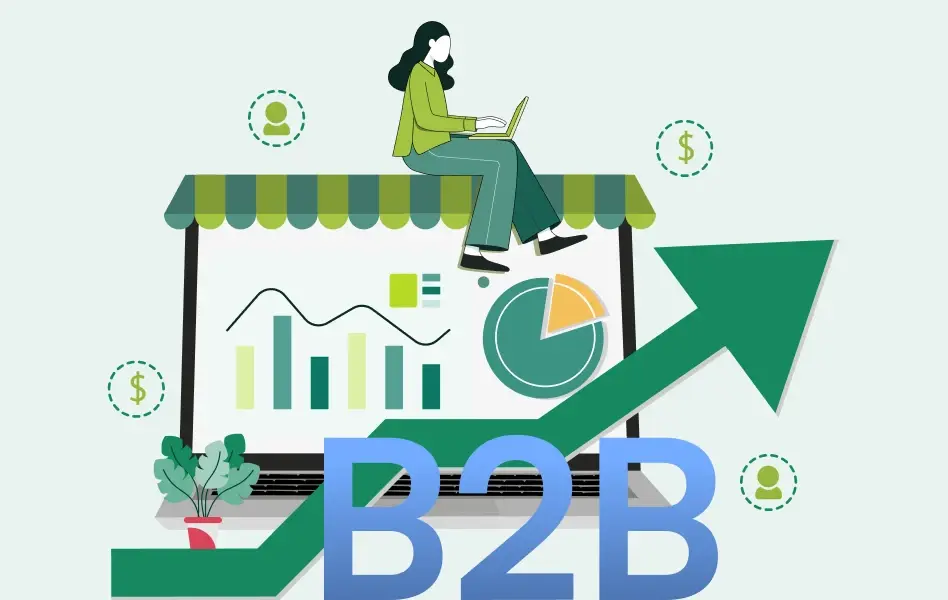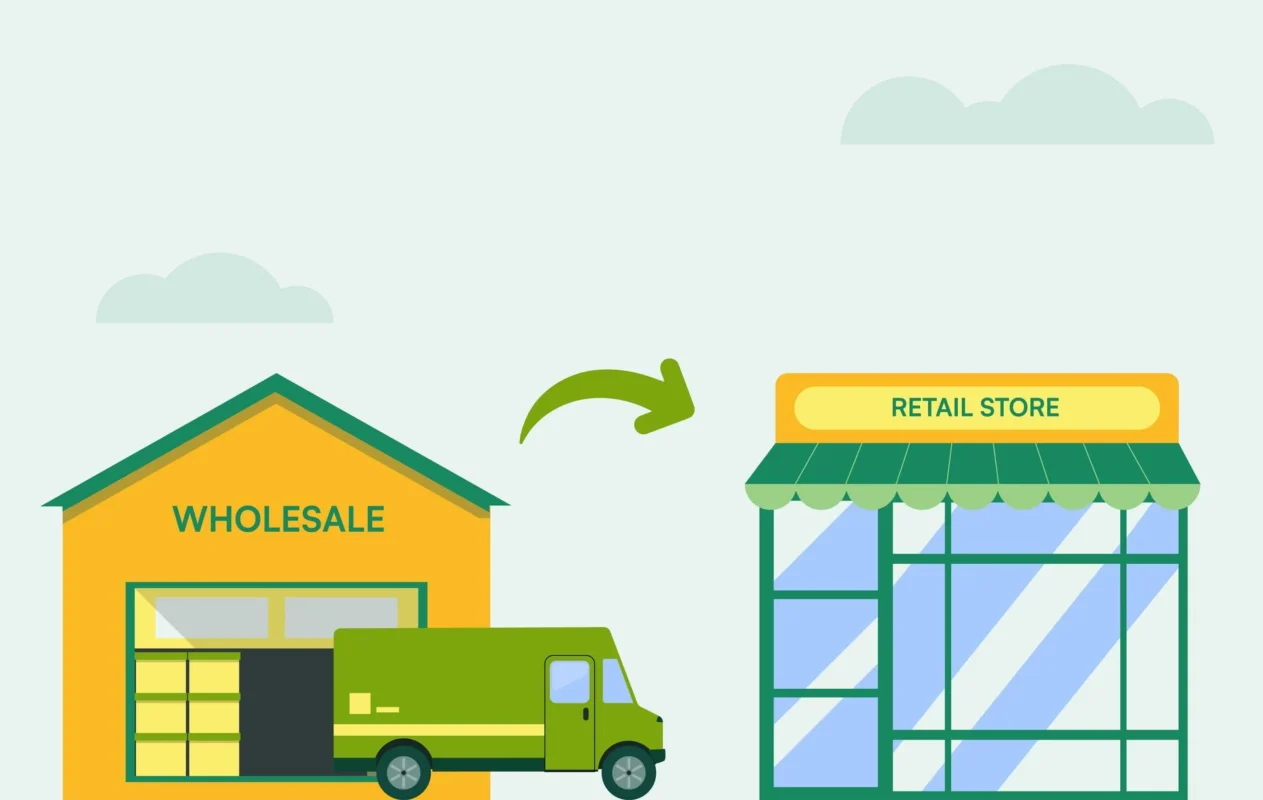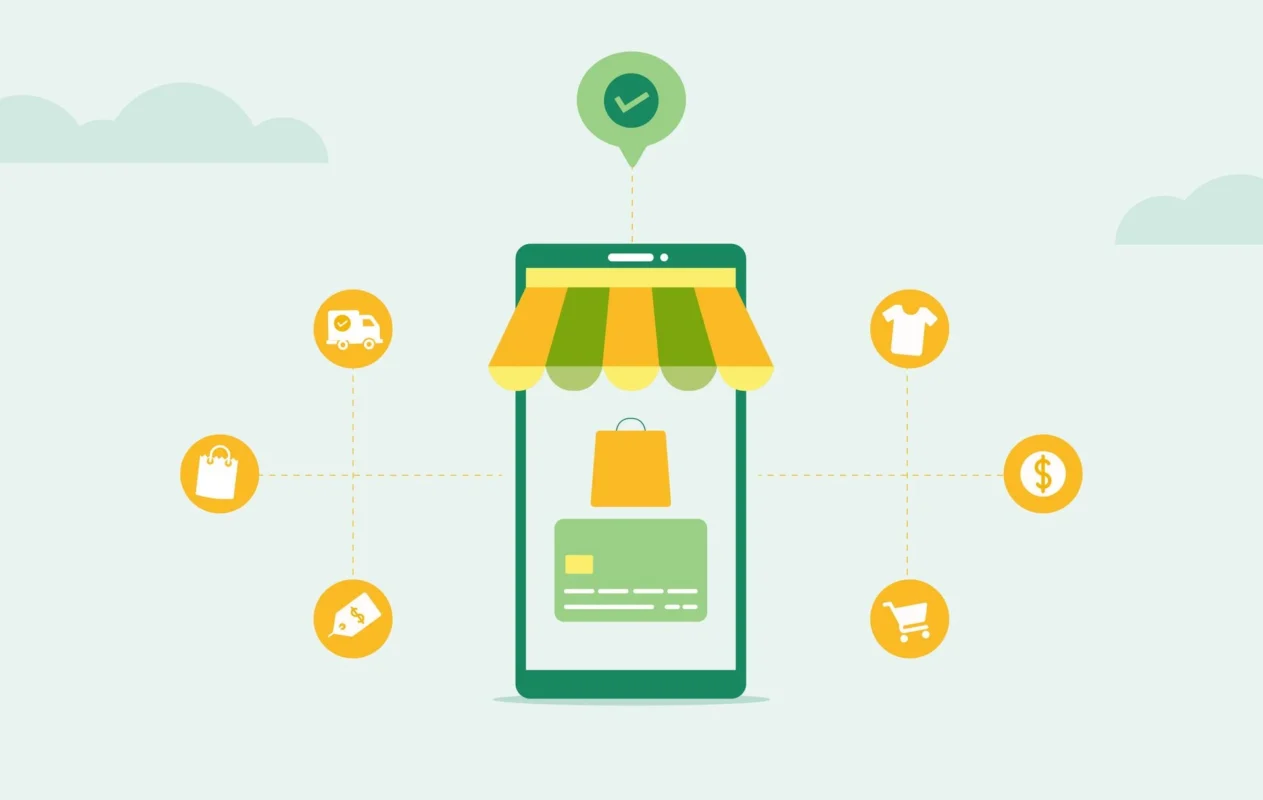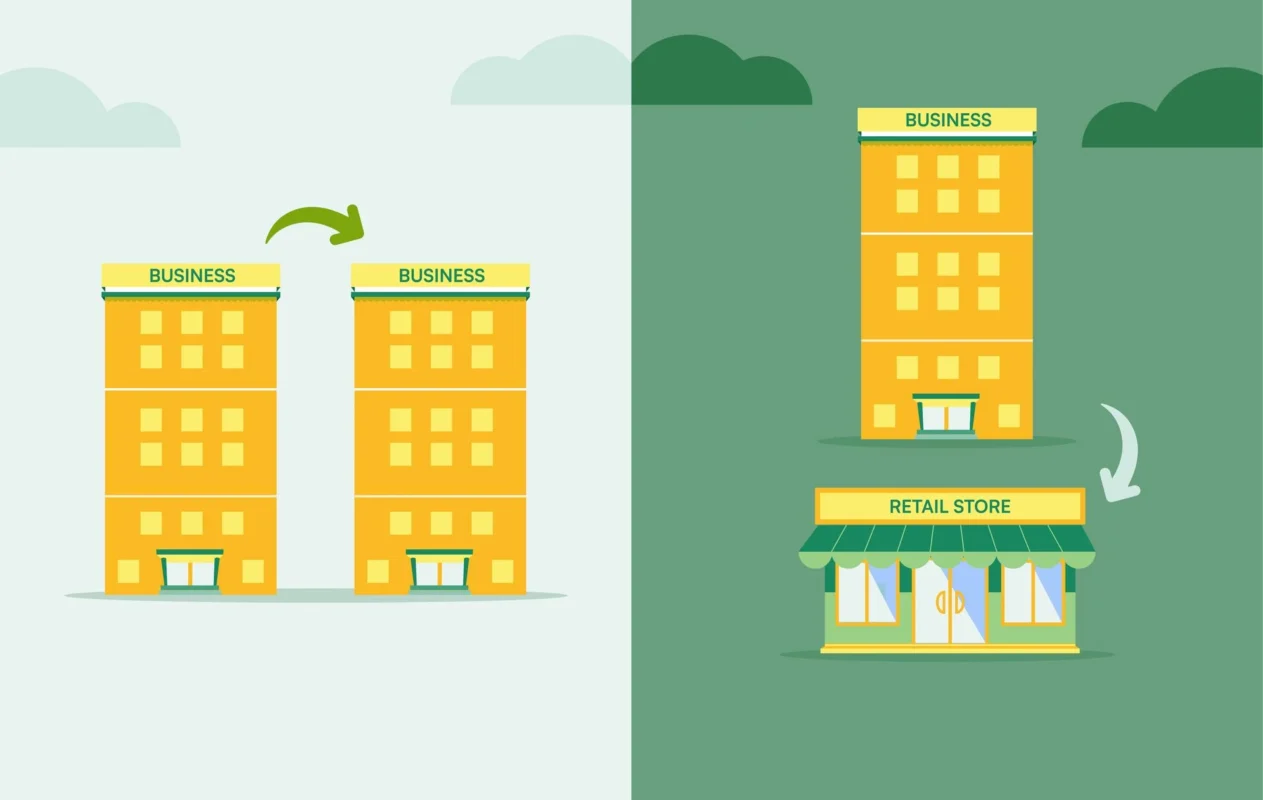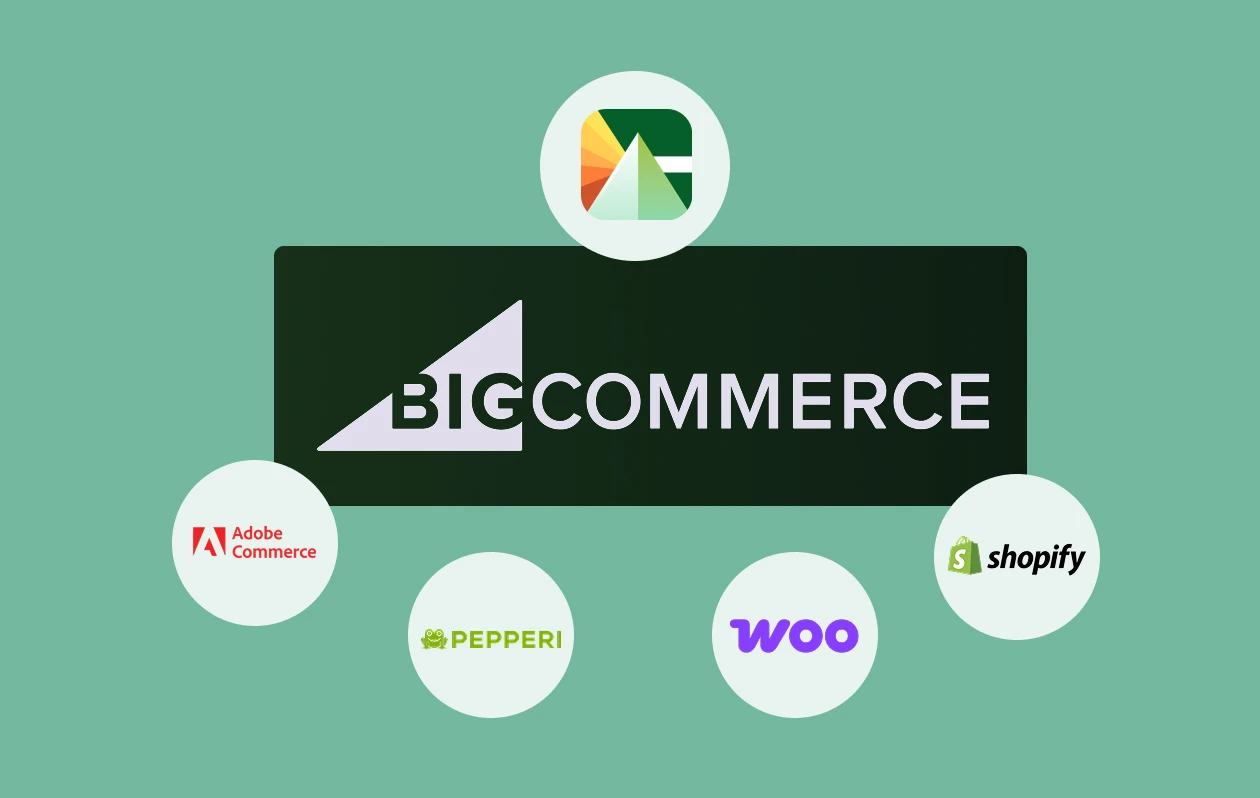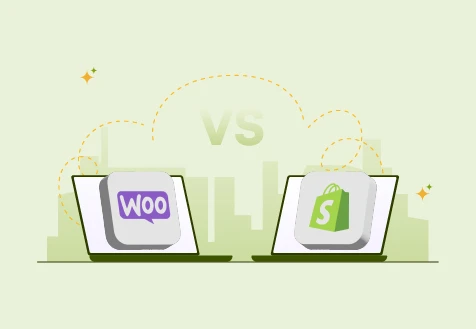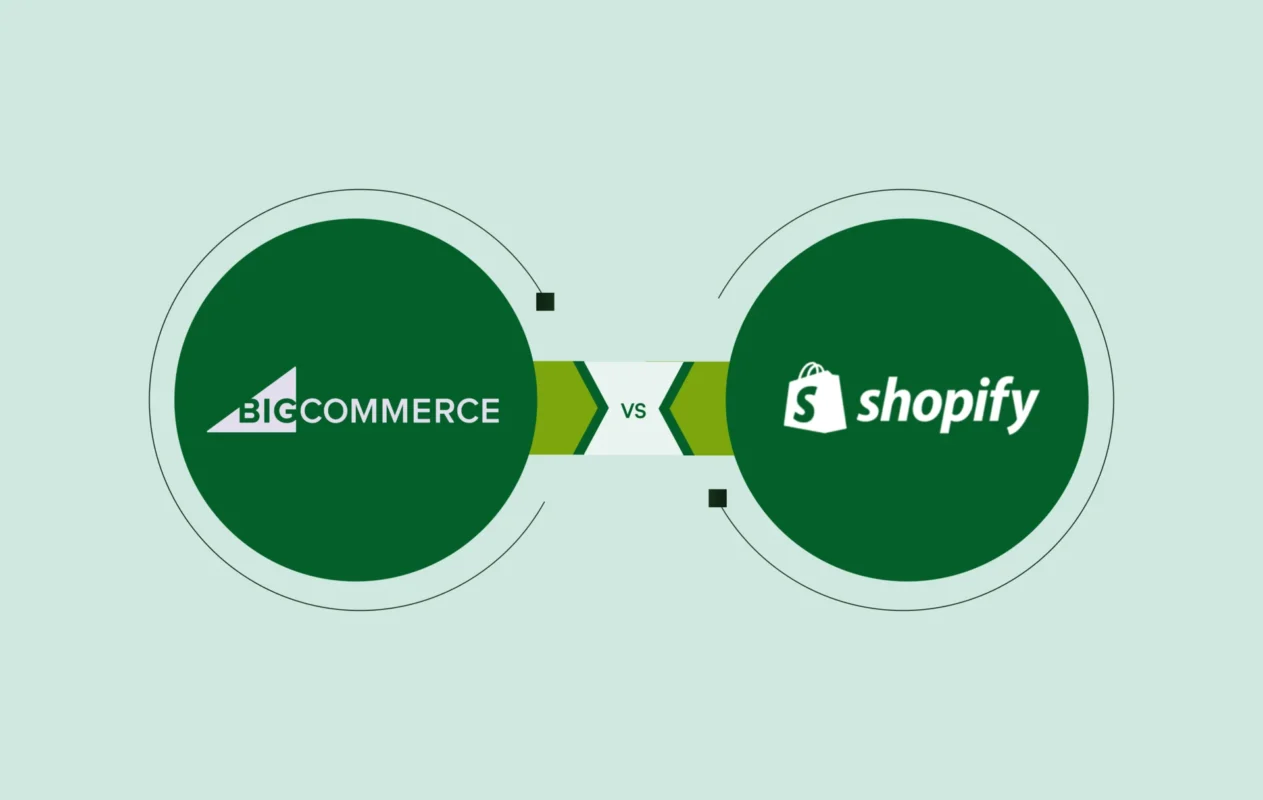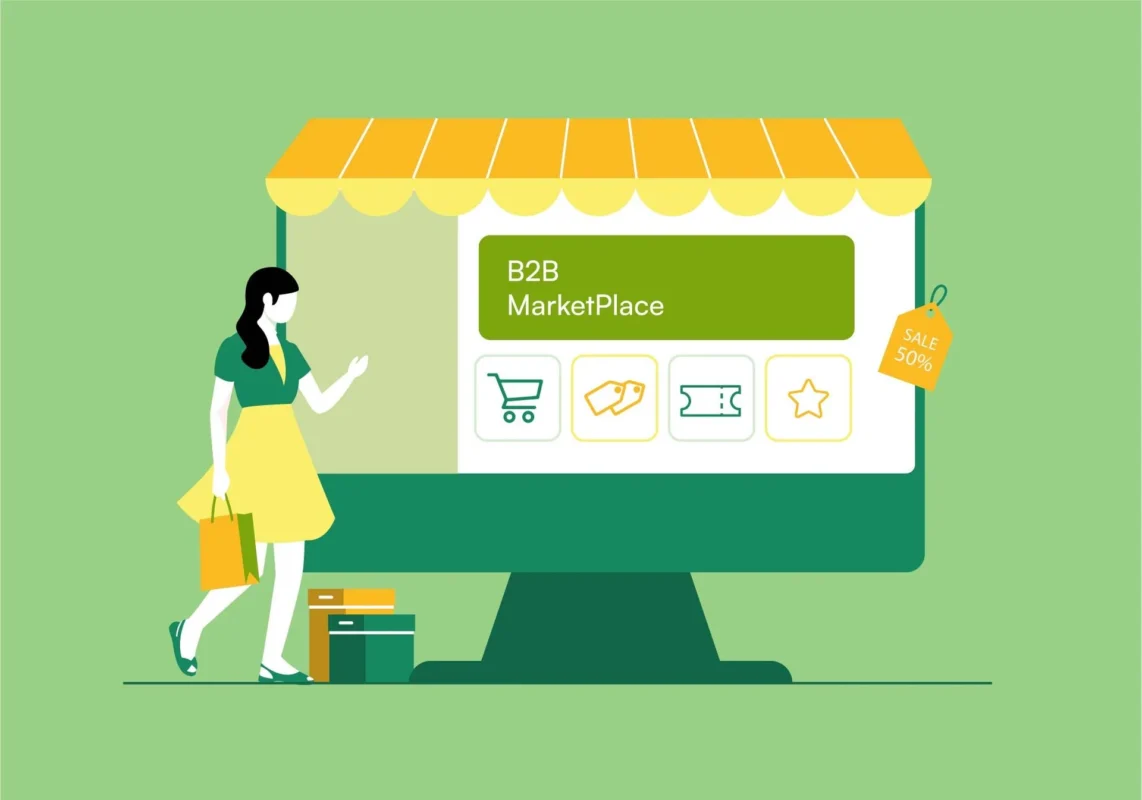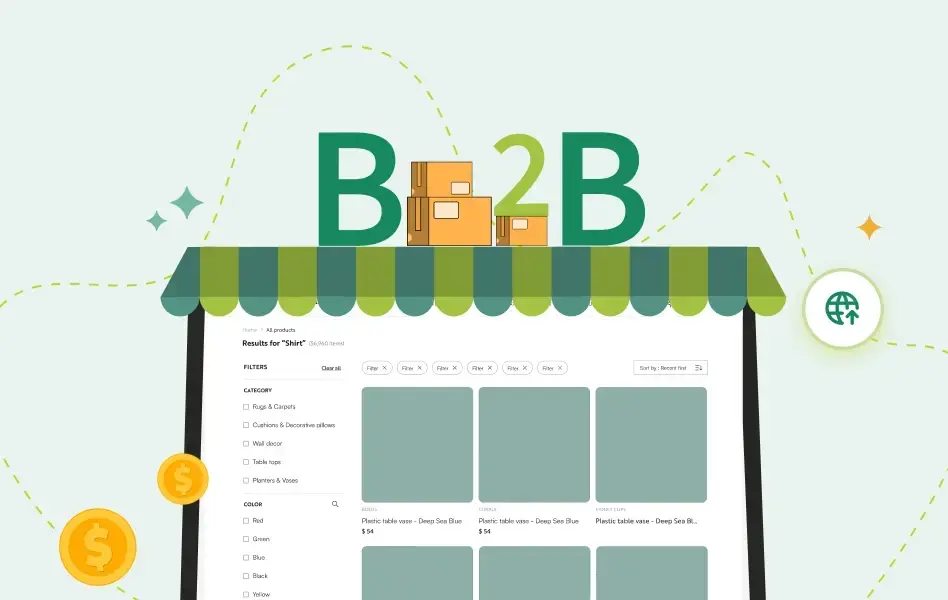Contents
- 1 What is Sana Commerce?
- 2 What is BigCommerce?
- 3 Sana Commerce vs BigCommerce: Detailed comparative analysis
- 4 Why is WizCommerce a better choice than Sana Commerce and BigCommerce?
- 4.1 1. Native integration capabilities
- 4.2 2. Flexible B2B checkouts
- 4.3 3. Order management through multiple price lists
- 4.4 4. Multi-cart management
- 4.5 5. AI lifestyle image generation (As a service)
- 4.6 6. Offline support at trade shows
- 4.7 7. Powerful eCommerce analytics
- 4.8 8. Kai, AI sales assistant for reps
- 4.9 9. 24/7 support
- 4.10 10. Inventory intelligence
- 5 Next steps: Choose the platform that matches your goals
- 6 Frequently asked questions
Today’s B2B buyers expect more than a basic online storefront. They want seamless, personalized experiences that rival popular B2C marketplaces. That’s why choosing an B2B ecommerce solution isn’t just an IT call anymore. It’s a strategic decision with long-term repercussions. In this battle for B2B dominance, two platforms have turned into allies for wholesalers, distributors, and manufacturers: Sana Commerce and BigCommerce. Both claim to simplify complex B2B operations and fuel growth. But which one truly delivers? Let’s break it down in this head-to-head comparison between BigCommerce vs Sana Commerce..
What is Sana Commerce?
Sana Commerce Cloud is a B2B ecommerce platform designed for manufacturers, distributors, and wholesalers looking for deep integration with their ERP systems. Its API-first architecture ensures that it fits within the existing tech stacks of most B2B businesses. The platform supports multi-channel selling and includes features like personalized pricing, customer-specific catalogs, and advanced quoting and ordering workflows.
Sana Commerce also supports multiple payment methods, including credit accounts and purchase orders, to match standard B2B purchasing practices. On the other end of the spectrum, buyers benefit from self-service portals where they can manage their profiles, track shipments, and review past orders, giving them full control while reducing pressure on your sales and support teams.
Key features of Sana Commerce
- Product configurator: Sana Commerce supports dynamic and 3D product configuration. This allows your buyers to customize the products they are viewing visually. Ultimately, this helps reduce returns by aligning expectations before purchase.
- Website builder: You get access to a no-code visual designer along with an AI-assisted content generator. The designer comes with a drag-and-drop interface, which allows you to quickly build and update your storefront without any coding experience. You can also use the built-in SEO tools to drive traffic to the created storefront.
- Dynamic promotion management: You can set up personalized promotions and automated campaigns within Sana Commerce using your existing ERP and web store data. Additional features include pricing agreements sync and recurring discounts management.
- Checkout comments: Your buyers can add product-specific notes directly at checkout, streamlining communication for customized orders. This helps reduce errors and ensures that special requirements are captured clearly during order placement.
- Backorder lines: Your buyers can get real-time visibility into open and pending orders, helping them plan their own inventory and deadlines better. This transparency supports smoother procurement workflows for both you and your buyers.
What is BigCommerce?
BigCommerce is a popular name, particularly in the B2C ecommerce space. Over the years, it has helped businesses build and scale their online stores. Its B2B Edition is a solution built on top of the core platform. It is designed to address the complexities of B2B transactions and streamline wholesale selling. Through this additional B2B layer, you get access to many native B2B tools, including quote generation, user permissions, re-ordering, etc.
BigCommerce is particularly known for its flexibility. It offers the option to customize the buyer experience using flexible source code. This way, you can ensure that your buyers get a B2C-like experience in a B2B setup, without you having to compromise on any B2B functionalities.
Key features of BigCommerce
- Multi-company hierarchy: This feature lets you set up B2B accounts that reflect your buyers’ real-world company structure (like departments or branches) with different roles and permissions for each team member.
- Custom catalogs and pricing: BigCommerce lets you offer each buyer or group their own unique product catalog along with personalized prices. This becomes visible only when they log into their account.
- Sales rep masquerade: Your reps can log in as the customer to help build carts, create orders, or manage shopping lists. This makes the buying process faster and easier.
- Company account credit management: You can easily manage company credit limits, balances, and payments across multiple customer accounts and groups within BigCommerce.
- Quote management: This feature lets your sales reps handle customer quotes using native tools or via integration with third-party solutions like B2B Ninja.
Related Read: 15 BigCommerce alternatives eCommerce businesses should know
Sana Commerce vs BigCommerce: Detailed comparative analysis
Now that you have a fair idea about the different features BigCommerce vs Sana Commerce, let us explore in detail what sets these two solutions apart in various key B2B commerce areas:
Order creation & management
Sana Commerce
Sana Commerce offers a suite of features designed to streamline order creation and management. The platform supports pre-orders, allowing your buyers to place orders for out-of-stock items. They can also request quotes independently, promoting greater self-service. Then you have backorder line visibility, through which your buyers gain a centralized view of all open orders. This helps them manage their own inventory and timelines better.
Sana Commerce also empowers your sales teams to access both online and offline customer history and even place orders on behalf of buyers.
BigCommerce
BigCommerce provides equally strong order creation and management capabilities, supporting both your reps and buyers. Buyers get a host of order creation features, including bulk upload and reordering from any company order. They can easily access their past orders (even the ones placed by other users within the same company) via a dedicated buyer portal.
Your reps, on the other hand, can view and search company-level order histories, including orders placed by company users and other sales representatives. Super Admins can log in as a buyer and create orders on the buyer’s behalf.
Winner: Both Sana Commerce and BigCommerce offer comparable features when it comes to order management. Hence, they are both winners in this area.
Analytics & reporting
Sana Commerce
Sana Commerce offers a unified view of your buyers’ journeys by combining data from both the web store and the ERP system. This integration helps track the full customer path, including online interactions, phone inquiries, and offline order placements.
The platform includes GDPR-compliant analytics and pre-configured dashboards tailored to common B2B business needs, such as monitoring abandoned carts and evaluating buyer engagement. There are also benchmarking tools that allow you to compare current sales performance with past trends or industry averages.
BigCommerce
BigCommerce also offers a robust set of analytics tools designed to help you track and understand your sales performance. These include standard reports covering key areas such as orders, customers, product performance, carts, in-store search behavior, and marketing effectiveness. Most reports update in near real-time, allowing you to monitor ongoing activity and customer behavior with minimal delay.
For deeper insights, an optional add-on provides advanced reports on customer lifetime value, product conversion trends, and purchasing patterns, which are usually updated on a weekly or monthly basis.
Winner: BigCommerce is the clear winner as it offers far more advanced analytics tools and reports when compared to Sana Commerce.
Product discovery
Sana Commerce
Sana Commerce offers advanced search features like Wildcard Search, Phonetic Search, search operators, faceted filters, content search, etc., to make the whole process of discovering your products a quick affair for your buyers.
One unique feature offered by Sana Commerce is Dynamic Redirects. In this, instead of showing search results with a list of pages, you get the option to promote your top searches or best-selling products by creating product-specific web store pages.
BigCommerce
BigCommerce also offers features like faceted search to help your buyers arrive at your products quickly. In this, buyers can refine results by selecting multiple attributes such as brand, price, size, color, rating, and custom fields. This is supported by a textual search, returning both product results and available facets.
There is also support for contextual filters like rating or stock availability on certain plans. All users get access to predictive search enhancement features like autocomplete and typo tolerance, improving the overall user experience.
Winner: Sana Commerce beats BigCommerce due to its enhanced search functionality.
Integrations
Sana Commerce
Sana Commerce can integrate with 100+ certified apps to improve your store’s functionality. It connects with major ERP systems like Microsoft Dynamics (NAV, AX, 365 BC/F&SCM) and SAP (Business One, S/4HANA, ECC). This ensures that all pricing, inventory, customer, and product information syncs in real time.
The platform also integrates with PIM (Product Information Management) solutions, CPQ (Configure, Price, Quote) tools, major payment providers, shipping services, marketplaces, email‑marketing platforms, and merchandising add-ons. Beyond native integration, the platform supports no‑code integrations via GraphQL and extension APIs.
BigCommerce
Unlike Sana Commerce, BigCommerce has a large app marketplace through which you can access thousands of apps to integrate with your B2B commerce store on BigCommerce. From accounting tools to ERPs and product sourcing tools to payment solutions, it covers most of the key platforms needed to run a B2B commerce store efficiently.
It means there is a high chance that your existing tech stack will be supported by BigCommerce, and you need not spend a lot of time connecting it with the platform.
Winner: BigCommerce is the clear winner owing to a massive number of 3rd party tools supported for integration.
Payment management
Sana Commerce
Sana Commerce offers flexible payment options. It lets your buyers complete purchases at checkout using accounts receivable or via integrated payment providers. Post-purchase processes like refunds and returns are also streamlined through automation in Sana Commerce.
You can deliver consistent and localized payment experiences with support for a wide range of providers, including Sana Pay, Amazon Pay, PayPal, Mollie, Ingenico, and more. Beyond standard order payments, B2B customers also have the ability to pay outstanding invoices directly within the platform. This improves convenience and cash flow efficiency at the same time.
BigCommerce
BigCommerce provides a customizable payment infrastructure designed to accommodate diverse buyer needs. It supports both online gateways and offline methods such as purchase orders, invoicing, and net terms. You can tailor payment options based on customer groups, aligned with negotiated terms or specific relationships.
Through integrations with global payment gateways and support for multi-currency transactions, BigCommerce ensures scalability across regions. Its APIs further allow you to make deep customization to the checkout process, making it ideal for those with complex payment workflows.
Winner: Both Sana Commerce and BigCommerce support all the critical payment management features expected out of a B2B ecommerce platform. Hence, there are no clear winners in this area.
Security
Sana Commerce
Sana Commerce incorporates many security and performance features to ensure a reliable and protected web store experience. Website assets such as images, styles, and public pages are stored in the cloud to improve page load speed, while Transport Layer Security (TLS) certificate renewals are automated to maintain secure connections without manual intervention.
The platform uses a Web Application Firewall (WAF) to detect and block hacking attempts and filter out traffic from unwanted sources. Even if the connected ERP system experiences temporary downtime, customers can continue browsing the catalog and place orders without interruption. Additional safeguards include continuous traffic scanning, detailed security reporting, and support for single sign-on (SSO) authentication and 2-Factor-Authentication (2FA) to streamline and secure user access.
BigCommerce
BigCommerce is also equally adept at protecting sensitive data and maintaining a safe buying/selling environment. All stores come with built-in SSL certificates, which secure the transmission of personal and payment information. The platform also uses strong encryption protocols to safeguard data, such as credit card details, turning it into unreadable code during transmission to prevent interception.
To further protect store access, BigCommerce supports two-factor authentication (2FA) for store owners, adding an additional layer of verification beyond just a password. Regular security audits and updates are also part of BigCommerce’s ongoing efforts to address vulnerabilities and keep its infrastructure resilient against emerging threats.
Winner: Both Sana Commerce and BigCommerce are equally capable of protecting and safeguarding yours and your customers’ data.
Support
Sana Commerce
Sana Commerce offers support and onboarding services at no additional charge. Users also get access to a wide range of self-service resources, including detailed user guides, ERP integration manuals, and a publicly accessible knowledge base via Sana Online Support.
For more structured learning, they offer a module called Sana University that provides on-demand training led by their experts. You also get a Customer Success team to guide you through setup and ongoing optimization. Every customer is enrolled in the Sana Success Track, a personalized program to help meet specific e-commerce goals. Support levels vary by plan, ranging from pooled support access to dedicated and region-specific support pairs.
BigCommerce
BigCommerce provides 24/7 technical support to assist wholesalers/sellers at any time, along with additional support for more complex needs like Account Management, Solution Architecting, Technical Account Management, and Implementation Project Management.
For businesses migrating to the platform, in-house Catalog Transfer Services are available to streamline the process. In addition to direct support, merchants can access documentation and resources to help troubleshoot issues, understand platform features, and manage their stores.
Winner: Sana Commerce is the clear winner as it offers far more support and learning resources to its users.
As you can see from the above pointers, it is a close match between the two platforms. While Sana Commerce scores in areas like product discovery and support, BigCommerce is the better platform when it comes to integrations and analytics. But what if there were a third platform that combined the strengths of both? That’s WizCommerce for you, offering all the critical B2B commerce features plus several nice-to-haves missing in most platforms today.
Why is WizCommerce a better choice than Sana Commerce and BigCommerce?
WizCommerce is an AI-driven B2B ecommerce platform carefully engineered to support all the core workflows demanded by today’s wholesalers, distributors, and manufacturers. The platform offers everything that Sana Commerce and BigCommerce promise, plus several advanced capabilities they don’t provide. Let’s understand each of them in detail.
1. Native integration capabilities
WizCommerce offers deep integration with all the major ERP systems, enabling real-time syncing of product data, inventory, pricing, and orders. Microsoft Dynamics 365 Business Central, NetSuite, Sage, Epicor Prophet 21, SAP Business One, SAP S/4HANA, and IBM AS400 are some of the major ERPs supported.
Apart from ERPs, WizCommerce also supports native integration with popular eCommerce platforms, logistics tools, payment solutions, and inventory software.
But that’s not even the best part. If your preferred tool is missing from our list, you can request it, and we will respond in 48 hours.
For the complete list of all supported tools, you can visit WizCommerce integrations page.
2. Flexible B2B checkouts
WizCommerce is way ahead of Sana Commerce and BigCommerce when it comes to the flexibility offered to sellers in customizing their checkout process. For instance, you can offer your buyers a variety of billing and shipping options, including the ability to share delivery instructions and choose a preferred payment method such as card-on-file, payment links, credit cards, refund credits, etc. You can also set unique payment terms for each buyer, such as upfront payments, deposits, or custom net terms.
3. Order management through multiple price lists
This feature of WizCommerce allows your reps to switch between multiple price lists for different buyer personas within the portal. The price list can be selected from the main product page or from the product details page. This flexibility ensures personalized pricing strategies can be implemented quickly without backend dependencies, offering greater control and efficiency in B2B selling.
4. Multi-cart management
This is a one-of-a-kind feature that empowers your sales reps to handle multiple orders at once with ease. Whether it’s for trade shows or for different store locations of the same buyer, your reps can create and manage multiple carts simultaneously, without losing any data. Switching between carts is effortless, and each cart can be submitted individually when ready.
5. AI lifestyle image generation (As a service)
WizStudio, a soon-to-launch service from WizCommerce, transforms your basic product shots into stunning, brand-aligned lifestyle visuals. You don’t need studios or design tools. Just provide your raw product image and a quick creative brief, and we will use WizStudio to generate high-quality, realistic, market-ready visuals that go far beyond generic stock photos. You can choose from multiple variants, raise requests for tweaks as needed, and get visuals that truly sell within a day. For instance, it is perfect for lean marketing teams who need lifestyle visuals without incurring exorbitant costs or delays, typically associated with traditional photoshoots. Such a capability is absent in both BigCommerce and Sana Commerce.
6. Offline support at trade shows
WizCommerce is built to perform even when your reps are off the grid, literally. The platform’s offline mode is extremely useful for trade shows, enabling your reps to take orders seamlessly across any device or operating system, even without internet access.
They can generate custom labels with QR codes, barcodes, or UPCs to enable instant order creation with a quick scan. New buyers can be recorded on the spot, with the option to save visiting cards for future follow-ups. Payments can be collected immediately using a POS terminal, or your reps can securely store card details to charge later based on agreed payment terms. Once back online, all order and customer data syncs automatically, ensuring nothing gets missed. Learn how you can use WizCommerce Trade Show App to boost sales at trade shows.
7. Powerful eCommerce analytics
You can track critical metrics like revenue, total orders, and quotes in real-time from a single, streamlined dashboard. You also get powerful filters that make it easy to dig into specific segments, generate in-depth reports, and monitor quote and order activity without the usual complexity associated with B2B ecosystems.
Then there is a built-in Lead Scoring System that analyzes five years of historical behavior to categorize customers into High, Mid, or Low priority, guiding your sales team to focus on high-value prospects.
And finally, with a dedicated Admin Dashboard, you get full visibility into individual rep performance and engagement, making it easier to coach effectively and optimize your team’s output.
8. Kai, AI sales assistant for reps
Kai is an industry-first AI sales assistant for B2B sales reps. It offers pre-set templates/prompts and responds to contextual sales queries of your reps, making it easier for them to plan and pitch effectively. For instance, your sales reps can instantly view customer summaries that capture their sales, categories frequently bought, and even pending payments.
Related Read: Understanding the rising impact of AI in B2B ecommerce
9. 24/7 support
Each client of WizCommerce is paired with a dedicated support manager to guide them through onboarding and long-term platform success. You also get 24/7 customer support for expert help via channels like email, live chat, and even Slack.
For growing businesses, WizCommerce provides practical assistance with data cleanup, product digitization, and catalog organization. Support tickets can be raised directly within the platform, and new team members can access one-on-one or group training tailored to their needs.
This depth of proactive, round-the-clock support simply isn’t offered by platforms like Sana Commerce and BigCommerce.
10. Inventory intelligence
Both your buyers and reps get real-time visibility into the latest inventory status. They can view available stock, backorder quantities, and in-transit inventory in the product details page. Such transparency in inventory is beneficial for all stakeholders. Your reps can pitch in-stock products and suggest alternatives for low-stock items, thereby closing deals faster. The retailers, on the other hand, can set accurate expectations with their own customers. They can confidently commit to delivery timelines and avoid overpromising, thereby solidifying customer trust.
Next steps: Choose the platform that matches your goals
Choosing between Sana Commerce vs BigCommerce really comes down to your growth goals and how complex your operations are. While both platforms offer decent B2B functionalities, what you need is a platform that’s built with fast-moving, modern B2B businesses in mind. WizCommerce was built exactly keeping this in mind. From AI-powered insights to flexible customization, your reps and your buyers get a true modern B2B experience from day one.
So, if you’re tired of bending your business to fit outdated platforms, maybe it’s time to upgrade to one that’s built for how you actually work. Book a free demo with WizCommerce now.
Frequently asked questions
1. What are the disadvantages of BigCommerce?
There are two major disadvantages associated with BigCommerce. One, it can get very expensive as you scale your business. Two, its advanced features may warrant a learning curve for beginners.
2. Is BigCommerce B2B or B2C?
BigCommerce is majorly B2C but offers B2B capabilities through an add-on module called the B2B Edition. You need to pay separately for this module to use it.
3. What are the features of Sana Commerce?
Some of the key features of Sana Commerce include 3D Product Configurator, Website Builder, Dynamic Promotion Management, Checkout Comments, and Backorder Lines.
4. Is BigCommerce SaaS or PaaS?
Ecommerce platforms like BigCommerce, Sana Commerce, Shopify, and WizCommerce are SaaS (Software as a Service) platforms. They host and manage the infrastructure.
5. Is BigCommerce good for small businesses?
Yes, BigCommerce does offer some features tailored for small businesses. However, small businesses may find rising costs as they or would need added integrations.





